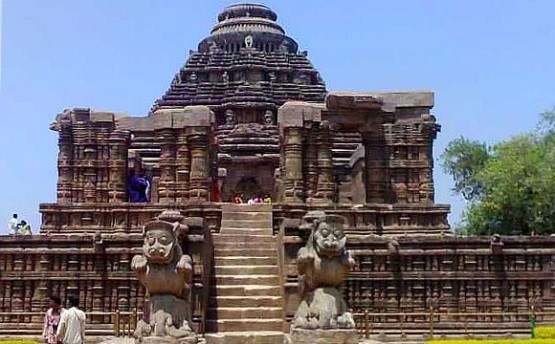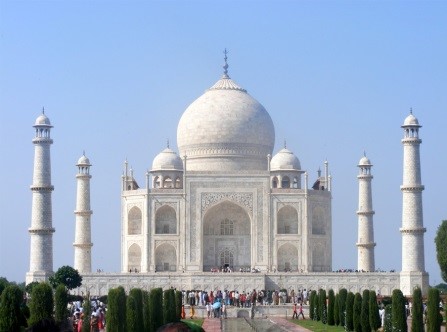 India’s cultural and civilisational heritage is reflected in the World Heritage List of the World Heritage Committee but in an incomplete manner. There has been a greater emphasis on cultural sites while natural and mixed sites have not been fully reflected. This is a phenomenon in many parts of the world including in old Europe, where cultural heritage overwhelmingly dominates recognition of Europe’s great cultural heritage on the World Heritage List. Natural heritage, whether in India or in Europe, is inadequately represented.
India’s cultural and civilisational heritage is reflected in the World Heritage List of the World Heritage Committee but in an incomplete manner. There has been a greater emphasis on cultural sites while natural and mixed sites have not been fully reflected. This is a phenomenon in many parts of the world including in old Europe, where cultural heritage overwhelmingly dominates recognition of Europe’s great cultural heritage on the World Heritage List. Natural heritage, whether in India or in Europe, is inadequately represented.
Perhaps the reason for this imbalance lies in the process of nomination and inscription, painstakingly elaborated in the Operational Guidelines of the World Heritage Convention. Perhaps it is also because tangible heritage, as represented in magnificent monuments and buildings such as the Taj Mahal are much easier to justify in accordance with the guidelines for inscription, as opposed to natural and mixed sites. I would give an example later, but let us first examine the Convention and the inscription process.
World Heritage Convention:
The Convention adopted in 1972 has proved to be a remarkably visionary instrument for safeguarding the world’s heritage. It has been dubbed as the flagship programme of UNESCO and has set the standard for conventions, instruments and programmes for conservation. Its Secretariat, known as the World Heritage Centre, is headed by an eminent Indian from the Indian Forest Service of 1976 batch, Shri Kishore Rao, who is also an expert on natural heritage.
Today, the World Heritage map has come to cover the globe. It has helped to recognize and protect properties whose exceptional universal value would make their disappearance and an irreparable loss, not only for the country concerned but for humanity itself. Perhaps, the greatest achievement of the Convention is that it has deepened public awareness of the need to protect and nurture this precious international legacy of the world. For if heritage attests to our common history, its preservation demonstrate our concern for our environment and our commitment to our collective future.
Operational Guidelines leading to inscription of Properties on the World Heritage List:
The preparation of the nomination dossier is central to the process of inscription. According to existing rules of business, it is the Archaeological Survey of India headed by its Director General with overall supervision by Secretary (Culture) that spearheads the process in India including the politically sensitive process of selection from the vast number of sites in India which all deserve inscription. The Indian Ambassador/PR to UNESCO plays the role of adviser in the process and later as India’s member on the World Heritage Committee, plays a crucial role in the intricate and, unfortunately, highly political process of background negotiations within the Committee, leading to inscription. I would give a few examples later, according to my experience as India’s Ambassador to UNESCO and India’s representative on the World Heritage Committee from September 04 to June 10.
Before States Parties begin to prepare a nomination of a property for inscription on the World Heritage List, they should become familiar with the nomination cycle. It is desirable to carry out initial preparatory work to establish that a property has the potential to justify Outstanding Universal Value, including integrity or authenticity, before the development of a full nomination dossier.
States Parties are encouraged to prepare nominations with the participation of a wide variety of stakeholders, including site managers, local and regional governments, local communities, NGOs and other interested parties.
States Parties are strongly encouraged to transmit to the Secretariat by 30 September of the preceding year (see paragraph 168) the draft nominations that they wish to submit by the 1 February deadline. This submission of a draft nomination should include maps showing the boundaries for the proposed site.
Nominations may be submitted at any time during the year, but only those nominations that are "complete" and received by the Secretariat on or before 1 February3 will be considered for inscription on the World Heritage List by the World Heritage Committee during the following year. Only nominations of properties included in the State Party's Tentative List will be examined by the Committee Nominations of properties for inscription on the World Heritage List should be prepared in accordance with the format.
The format includes the following sections:
· Identification of the Property
· Description of the Property
· Justification for Inscription
· State of conservation and factors affecting the property
· Protection and Management
· Monitoring
· Documentation
· Contact Information of responsible authorities
· Signature on behalf of the State Party(ies)
For a nomination to be considered as complete, the following requirements may be noted:
Identification of the Property
The boundaries of the property being proposed should be clearly defined, unambiguously distinguishing between the nominated property and any buffer zone.
Description of the Property
The Description of the property should include the identification of the property, and an overview of its history and development.
Justification for Inscription
This section should indicate the World Heritage criteria under which the property is proposed, together with a clearly stated argument for the use of each criterion. Based on the criteria, a proposed Statement of Outstanding Universal Value of the property prepared by the State Party should make clear why the property is considered to merit inscription on the World Heritage List. A comparative analysis of the property in relation to similar properties, whether or not on the World Heritage List, both at the national and international levels, should also be provided. The comparative analysis should explain the importance of the nominated property in its national and international context. Statements of integrity and/or authenticity should be included.
State of conservation and factors affecting the property
This section should include accurate information on the present state of conservation of the property (including information on its physical condition of the property and conservation measures in place). It should also include a description of the factors affecting the property(including threats).
Requirements for the nomination of different types of properties:
Transboundary properties
A nominated property may occur:
a) on the territory of a single State Party, or
b) on the territory of all concerned States Parties having adjacent borders (transboundary property).
Serial properties
Serial properties will include two or more component parts related by clearly defined links:
a) Component parts should reflect cultural, social or functional links over time that provide, where relevant, landscape, ecological, evolutionary or habitat connectivity.
b) Each component part should contribute to the Outstanding Universal Value of the property as a whole.
A serial nominated property may occur:
a) on the territory of a single State Party (serial national property); or
b) within the territory of different States Parties, which need not be contiguous and is nominated with the consent of all States Parties concerned (serial transnational property)
Evaluation of nominations by the Advisory Bodies
The Advisory Bodies will evaluate whether or not properties nominated by States Parties have Outstanding Universal Value, meet the conditions of integrity and/or authenticity and meet the requirements of protection and management.
Evaluations of cultural heritage nominations will be carried out by ICOMOS.
Evaluations of natural heritage nominations will be carried out by IUCN.
In the case of nominations of cultural properties in the category of 'cultural landscapes', as appropriate, the evaluation will be carried out by ICOMOS in consultation with IUCN. For mixed properties, the evaluation will be carried out jointly by ICOMOS and IUCN.
 Evaluation and Conclusion:
Evaluation and Conclusion:
The above demonstrates that inscription on the World Heritage List is a time-bound process that should respect the procedures elaborated in the Operational Guidelines, from the inscription on the Tentative List, to the preparation of the "nomination dossier”, to active lobbying of other members of the Committee regarding the merits of the site proposed, to the interaction and engagement with the concerned Advisory Body, whether ICOMOS or IUCN, to the actual presentation of the case before the Committee. Sometimes, a nomination can fail because of a cultural divide within members of the Committee or because of a one-sided presentation by the Advisory Body concerned. I recall that in the case of Majuli Island, on the Brahmaputra river in Assam, an Island larger than Belgium, despite our best efforts to present our dossier as an outstanding cultural landscape symbolising India’s Shivate heritage, the representative of the Advisory Body concerned only focussed on climate change issues arguing that Majuli Islands’ Outstanding Universal Value would diminish because of the changing course of the Brahmaputra river. There was little understanding of the cultural issues at stake, and of the impact of its inscription, the first in Assam, on its future existence and conservation. Ultimately, as is unfortunately the case often in the Committee, it became the victim of a highly political vote with Western countries voting against India. We lost by a narrow margin.
An example, however, where we were able to prevail despite the adverse report by the Advisory Body was the historic Apravasi Ghat in Mauritius, which traces the indentured route from India to Mauritius. Although the representative of the Advisory Body tried to argue that there was no indentured route and that these Indians were seeking a better future through immigration, India was able to make the case along with Mauritius to Committee members that indentured labour’s passage to Apravasi Ghat could not be compared with modern immigration as we understand it and that its OUV was intact and represented a significant historic memory to the World, similar to the Slave Route. Despite the protest by the Advisory Body, this site was inscribed by acclamation representing a great victory for India and Mauritius.
Let me conclude by underlining the importance of understanding the process of inscription and to prevail upon the Committee members to accept the merits of our case, if we are of the view that our site has OUV. Swami Vivekanand has said: "Our motherland is awakening from her deep long sleep.. India that is to be, the future India, must be much greater than ancient India.” To demonstrate the greatness of this heritage past and present, we must be fully aware of and master the procedure of nomination, since the process itself is complex, time consuming, poorly understood and often frustrating.
Amb. Bhaswati Mukherjee has served as India's Premanent Representative to UNESCO during 2004-2010
Courtesy : Ministry of External Affairs, GOI.